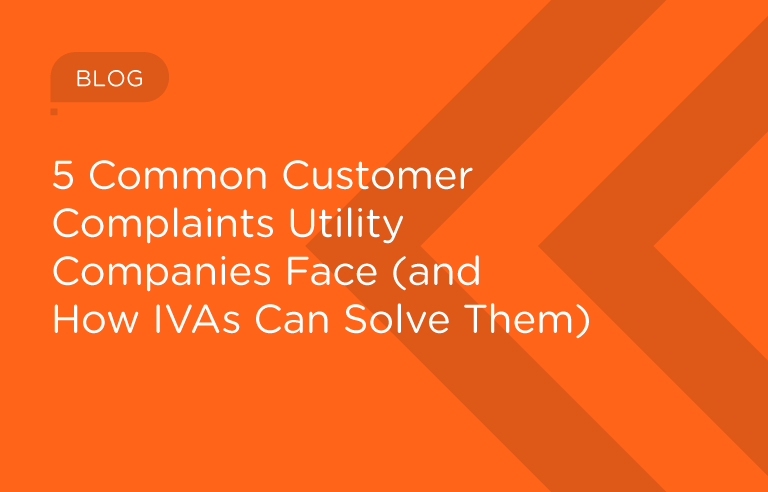Why should hospitals and healthcare organizations care about patient experience?
At its core, healthcare is about serving people. Service industries must keep customer experience in mind, otherwise they are contradicting this integral purpose.
Imagine having a doctor with a terrible bedside manner. No matter how great the doctor or facility, chances are the patient will leave unhappy, and potentially wanting to see another provider. The perception of the entire organization can be negative due to this one interaction.
Now think about patient experience outside of the doctor’s care. Patients spend a lot of their time not with a doctor or nurse, but with administrative staff or medical contact centers. These touchpoints have an equal ability to influence the perception of the entire organization. Therefore long waits, unknowledgeable staff, and complicated processes can send potential (and current) patients right back to google to search for another place to get the care they expect.
Putting the care back into healthcare
Healthcare organizations are often known for their expertise and prestige, not their patient experience. Patients may come to a hospital due to its prestigious reputation, but if they aren’t given the care they expect, it may be the first and last time that they go. With more options and access than ever before, patients are learning that they do not have to succumb to less-than-ideal experiences just to get better.
Understanding how to care for patients in a way that adds value to their experience, not takes it away, is vital for healthcare companies to continue operating with sustainable margins.
Improving margins
According to a survey by Deloitte, maintaining and improving margins is a top issue for health system CEOs. Not only do lower margins keep costs down for patients, but it allows the healthcare organization to grow and serve more people.
That being said, reducing margins should not come at the expense of patient care or experience.
Instead of cutting down on the number of hospital beds or reducing paychecks, healthcare organizations should look toward increasing operational efficiencies through technology to save money. A great place to start is with patient experience, specifically for customer service.
No matter what the structure of an organization’s contact center, technology can be used to increase volume without increasing costs or decreasing the quality of service. How? Conversational AI applications, like our Intelligent Virtual Assistant, can take over repetitive and time-consuming tasks, like scheduling patients appointments, delivering pre-appointment instructions, and handling payments so that live agents can spend more time focusing on the patients that need their expertise.
What does high quality patient care look like?
In order to provide great care with technology, there are five basic principles that should be considered. Without following these best practices, the added technology may become more of a burden than a help for patients.
While there may be a wide range of healthcare organizations out there– from hospitals to private practices to laboratories to dentists to nursing homes (we could go on and on)– the fundamental requirements for a positive experience remain the same. Here are our four best practices for great patient experience:
1. Simplicity
Healthcare is complicated. From insurance to referrals to compliance issues, it’s easy for patients to get tied up in red tape while trying to improve their health. Simplifying the patient experience should be a top priority for healthcare contact centers in order to best serve their patients. Understanding the patient’s journey can provide great insight to how to achieve this.
2. Accessibility
Limiting patients to only contact healthcare organizations during business hours or through specific channels can hinder patient experience. Implementing technology that gives patients the ability to self-service anytime of day (or night) and get things done on their own schedule increases patient satisfaction with more accessible platforms. Omnichannel technologies allow patients to have the most streamlined and convenient experience possible.
3. Personalization
Isn’t it a great feeling when a doctor remembers details about you when you see them? It’s personal touches like this that add great value to the experience and make patients feel valued. While we can’t expect agents or administrative staff to keep records of all patients, a well-integrated backend system can give agents and self-service technology the information they need to personalize each conversation.
4. Privacy
Healthcare information is personal. Security should be of the utmost importance for healthcare organizations who are looking to implement technology. However, “organizations should consider balancing security and privacy with access and transparency,” according to David Betts, Deloitte’s principal and leader for Customer and Digital Transformation for Health Care Providers. Finding ways to increase security and compliance, such as through voice biometrics technology, can give healthcare organizations the balance they need between security and convenience.
As healthcare systems digitally transform, patient experience should not be lost. From improving margins and patient satisfaction, patient experience can have a great impact on the success of a healthcare organization.
Hospitals prioritize patient care, but long waits and impersonal interactions can damage the experience. Download our free guide to learn how Intelligent Virtual Assistants can improve patient experience and free up staff for complex cases.




